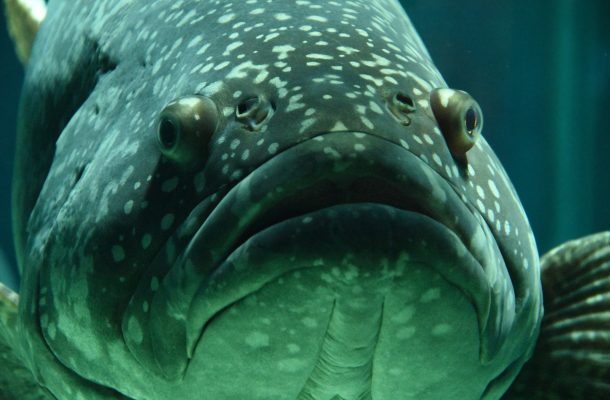Big fish thrive in protected oceans

Big fish are harder to find in areas sprawling with human activity, unless you’re looking in no-take marine reserves, according to a new study led by marine scientists at The University of Western Australia.
The study, published in Conservation Biology, is one of the largest of its kind and assessed the body size of fish from around Australia, using more than 22,000 baited remote underwater video (BRUV) devices and one million measurements along 10,000km of coastline.
PhD student Nestor Bosch, from UWA’s School of Biological Sciences, said BRUVs gave researchers the ability to see into areas where they couldn’t normally and enable the analysis of fish that would ordinarily be scared away by the presence of a diver.
“Our underwater analysis revealed larger fish were consistently more abundant in areas further away from human activity, across most of the country’s northern tropical reefs and coolest kelp forests,” Mr Bosch said.
“Despite this, big fish can be found within marine reserve areas, some of which are located on the doorstep of our largest cities.”
Marine reserves and sanctuaries are areas of the ocean that people are encouraged to visit, but prohibit activities such as fishing or mining.
Dr Tim Langlois from UWA’s Oceans Institute and School of Biological Sciences said bigger fish played an important role in marine ecosystems because they produced eggs that ensured the survival of fish populations.
“We’re pleased to see researchers in Australia and across the world are using our Global Ocean Observing System Best Practice and GlobalArchive data portal,” Dr Langlois said.
“These tools were designed at UWA and combine fish and shark video data to provide us with a better picture of what is happening beneath the waves.”
“These sanctuaries provide a window into the past and vision for our future, bringing us closer to nature so we can better understand how to protect it.”
GlobalArchive.org was created with support from the Australian Research Data Commons, funded by the National Collaborative Research Infrastructure Strategy.
This research is supported by the Australian Government’s National Environmental Science Program Marine Biodiversity Hub, one of six hubs funded by the National Environmental Science Program, a long-term commitment by the Federal Government to environment and climate research. Additional funding was provided by UWA and Parks Australia.
Open Forum is a policy discussion website produced by Global Access Partners – Australia’s Institute for Active Policy. We welcome contributions and invite you to submit a blog to the editor and follow us on Twitter, Facebook, Linkedin and Mastadon.













